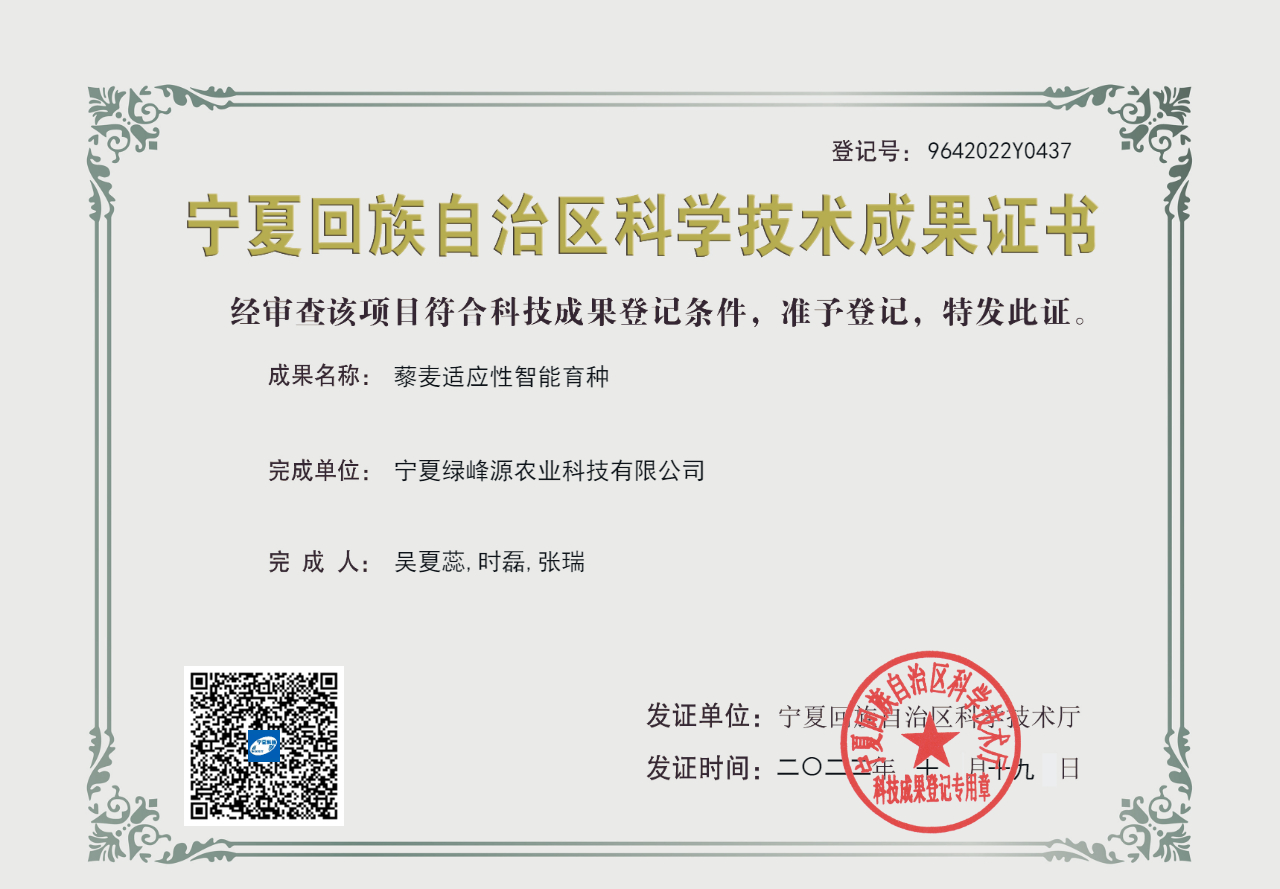
This technology is to cultivate quinoa varieties adaptable to different soil types, and collect data of climate, soil, and plants to analyze meteorological factors and quinoa yield, establish regression models and technical protocols for quinoa cultivation; and therefore develop meteorological service indicators for quinoa growth, adjust regional planting structure, and promote farmers' income.
1. Breeding two quinoa germplasms as Ningxia-quinoa I and Ningxia-quinoa II.
2. Based on practical quinoa production requirements, maintain the condition for optimal quinoa growth, with the amount of nitrogen fertilizer at 0.1-0.2g/kg, and irrigation at 60-80% field capacity.
3. Attach importance to the coordination of irrigation and fertilizer through planting. Apply nitrogen fertilizer to alleviate drought stress and improve quinoa yield under the circumstance of natural rainfall or drought.
4. In areas with limited irrigation, early sowing at appropriate times can extend the duration from grain filling to maturity, increase accumulated temperature during this stage, and enhance quinoa yield per unit area.


微信公众号

手机访问

